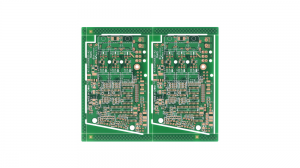The United States has the Silicon Valley, Scotland has the Silicon Glen and the Silicon Docks have been formed in Dublin, Ireland as the Emerald Isle has undergone a technological revolution.
Silicon has become a word synonymous with the modern advancements in technology, having become the most commonly used of a group of elements known as semiconductors.
These materials have revolutionised our lives, and will continue to do so – but how much do you know about them?
What are semiconductors?
Semiconductors are defined as elements that are intermediate between conductors and insulators of electricity – displaying both properties, put simply. Carbon, silicon, germanium, tin, selenium and tellurium are all naturally occurring elements classed as having semiconductor properties, while they are often combined or with other materials to achieve the correct properties required for each use, practices known as ‘doping’ and ‘gating’.
Doping is the changing of a semiconductor’s state by combining it with impurities. This is done to alter its electrical and structural properties, often with the purpose of boosting it conductive power.
Gating, also known as the field effect, is achieved by using an external source of electricity to modulate electrical conductivity.
These processes make semiconductors highly versatile and have seen them put to use in myriad different settings.
How are semiconductors used?
The use of semiconductors has been particularly prevalent in the development of diodes, transistors, and integrated circuits. This has resulted in the advances in:
Computers: Microchips have revolutionised digital technology, which now feeds directly into our everyday life.
Medicine: As technology has grown, so too has our understanding of serious illnesses and injuries, and our ability to treat them.
New ways of living: Mobile phones have changed humanity. Billions of transistors exist in every single handset.
What does the future hold for semiconductors?
Artificial Intelligence (AI), 5G and 6G mobile networks, autonomous vehicles and the increasing use of robotics in industry – the advances in technology show no sign of slowing down as the 21st century continues to see our lives become more and more intertwined with our digital tools.
Chips made of semiconductors have been getting smaller and smaller over time, allowing more and more of them to be crammed into our devices, in turn making them more and more powerful.
“Silicon is reaching the limit of its performance in a growing number of applications that require increased speed, reduced latency and light detection,” Stephen Doran, CEO of the UK’s Compound Semiconductor Applications Catapult, recently said in a blog on the future of semiconductors for Rambus. “That suggests silicon will be completely replaced, which is unlikely to happen any time soon, and may well never happen.”
It seems we may well have approached the technical limits of what semiconductors are currently capable of. But with their vast numbers of potential modifications through doping and gating, watch this space for the next breakthrough.






